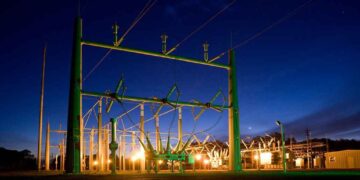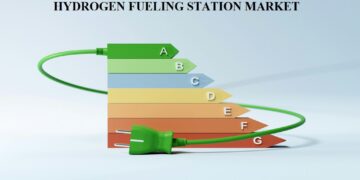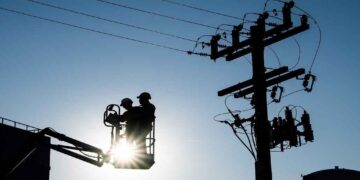With more than 9GWh of operational grid-scale UK battery energy storage systems (BESS) capacity along with a strong pipeline, it is worth identifying the hotspot of the region and how the spectrum may evolve in the years to come.
Let us delve into the regional divide of energy storage in the UK and also look into both operational capacity as well as the pipeline. The data shows that there are three different regions that lead to operational capacity, construction capacity, and submitted capacity.
Operational Capacity in Terms of Region in the UK
It is well to be noted that the southeast of England leads the way with the highest operational capacity, presently more than 2GWh and most completed UK battery energy storage systems (BESS) sites across the UK. The region has gone on to maintain the top position throughout the UK since 2021, moving ahead of the other areas in 2023, where it happened to have 33% of the freshly built capacity that was built that year.
Interestingly, Scotland is witnessing strong build-out growth, with a cumulative functional capacity rising over 300% since 2022. The region went on to overtake the northwest of England in 2025 as the region having the third-highest cumulative capacity, which is added due to the completion of Zenobia’s 200MW Blackhillock project.
In contrast, if you look into Northern Ireland, it is still witnessing sluggish growth within the completed sites. The highest capacity that has been completed in a single year for Northern Ireland was in 2021 at more than 90MWh but the construction on projects has slowed ever since.
It is worth noting that Scotland happens to have the highest average capacity when it comes to completed sites at 52MWH, whereas the northeast of England has the lowest with 17MWH. When we talk of the West Midlands, they have the highest percentage of co-located sites, with 60% of completed projects co-located, almost double the total proportion of completed projects in the UK at around 33%. Apparently, these sites located in the West Midlands happened to be predominantly built on solar farms before 2020.
Capacity Submission Throughout the UK
Prior to 2021, there happened to be an almost equal split when it came to submitted capacity in each region because the UK energy storage market was still in the very nascent stages of growth. With time, Scotland has also become one of the most promising regions for future UK battery energy storage systems – BESS projects. But Scotland’s share when it came to submitted capacity dipped to 15% from 26% in 2023, and on the other hand, the southeast of England managed to see a growth from 6% to 17%.
There happens to be more than 120GWh of battery energy storage systems – BESS capacity within the Scotland pipeline, but 60% of that capacity is at the pre-application stage. If we go on to ignore the pre-application sites and look to focus on projects that are likely to be completed soon, Scotland still happens to have the highest capacity in terms of region when it comes to pipeline at over 40GWh. Importantly, the region also had the highest number of approvals in 2024, which numbered to more than 8GWh.
East Midlands is the region in England with the largest pipeline, which excludes pre-application capacity and stands at more than 20 GWH. The region has gone on to show a balanced growth with time, having the share of submitted capacity increasing since 2021, and apparently 2024 had more than 10.5GWh which was submitted in terms of planning.
This kind of robust increase when it comes to the East Midlands was primarily driven because of the high number of sites submitted with more than 1GWh capacity, which has gone on to help the region in terms of attaining the highest average capacity as far as the pipeline projects at 202MWh are concerned.
29% of the capacity under construction in England happens to be based in West Midlands. This has been helped by the large projects that are developed there, like the Hams Hall battery from Pendo Power and the Cellarhead energy storage project from Atlantic Green.
Moreover, the transmission energy capacity – TEC register is also useful in order to gauge when products may as well come online. But not all the completed sites will get connected to the transmission system. At present, only 42% when it comes to the operational capacity in the UK happen to be on the register.
However, there are certain advantages to being connected to the transmission network, like a more dependable connection. Also, even more battery projects happen to be added to the register every month, thereby resulting in the increase in the queue. 84% of the capacity is under construction, and 52% of the sites have already been added.
As per the TEC register, more than 3GW of standalone battery storage projects are due to get connected in 2025, but almost 75% of the overall are due for connection only post 2030.
In totality, regardless of where the site happens to be located, a common trend in the UK is the move towards a wider project size. The average capacity when it comes to projects under reconstruction is 203MWh, which marks a large growth when it comes to the average size of UK battery energy storage systems – BESS that were completed in 2024, just around 6 9MWh. There also seems to be more emphasis when it comes to transmission projects, but due to the long queue, it is most likely that these projects are not going to witness completion for the next several years.










































